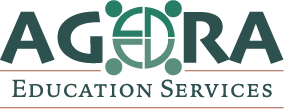Test Development
Define Test Objectives: Nail down exactly what you want to measure—be it knowledge, skills, or aptitude.
- Identify Stakeholders: Involve everyone who has a stake in the results to ensure the test meets all needs.
- Determine Scope & Requirements: Decide on the test length, content domains, and performance standards.
- Assemble Project Team: Gather a crew of experts—each bringing a unique skill set to the table.
- Develop Project Plan: Chart out the roadmap with clear deadlines and responsibilities.
- Design Test Blueprint: Lay out the structure, including sections, question formats, and scoring rubrics.
- Create Test Items: Craft questions that are clear, fair, and aligned with objectives.
- Conduct Pilot Testing: Test the test! Gather initial reactions and spot any issues.
- Analyze Pilot Data: Dive into the stats to see how each item performs.
- Revise Test Items: Refine questions to improve clarity and effectiveness.
- Finalize Test: Lock in the content and format for the official version.
- Implement Test Administration: Roll out the test under consistent conditions.
- Score and Analyze Results: Use scoring models to evaluate performance accurately.
- Report Findings to Stakeholders: Share the results and what they mean for future actions.
Interesting Insights:
- Collaboration is Key: Successful test design thrives on teamwork—bringing together diverse expertise ensures a well-rounded assessment.
- Data-Driven Decisions: Psychometric analysis isn’t just number-crunching; it’s about making informed choices to enhance test quality.
- Continuous Improvement: Each test cycle offers lessons. Embracing feedback leads to better and more effective assessments over time.
Going Further:
Adaptive Testing Revolution:
- What It Is: Tests that adjust their difficulty based on the test-taker’s responses in real-time.
- Why It Matters: Provides a more personalized assessment experience and often results in more accurate measurements with fewer questions.
Technology Integration:
- Leveraging platforms for online test delivery, automated scoring, and real-time analytics is changing the game.
Ethical Considerations:
- Fairness and Accessibility: Ensuring tests are free from bias and accessible to all, including those with disabilities.
- Data Privacy: Safeguarding personal data collected during testing is paramount.
Have You Considered?
- Innovative Item Types: Moving beyond multiple-choice to simulations or interactive questions can provide deeper insights.
- Global Standards Alignment: Aligning your test design with international benchmarks can broaden its applicability and recognition.
- Professional Development: Investing in training for your team on the latest in test design and psychometric methods pays off big time.
If you’re curious about how to implement any of these ideas or want to explore specific aspects in more detail, just let me know! There’s a whole world of fascinating strategies and tools in test design project management waiting to be discovered.
